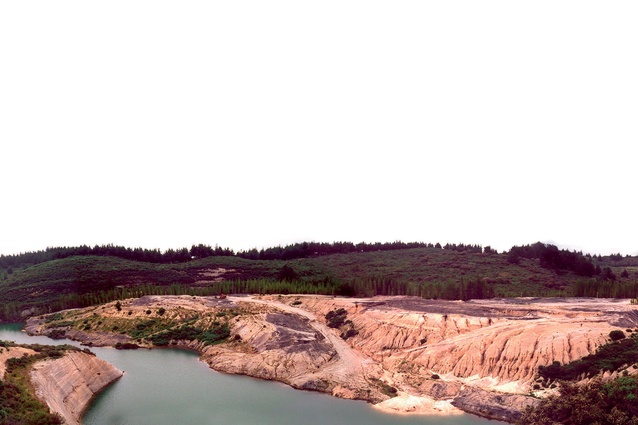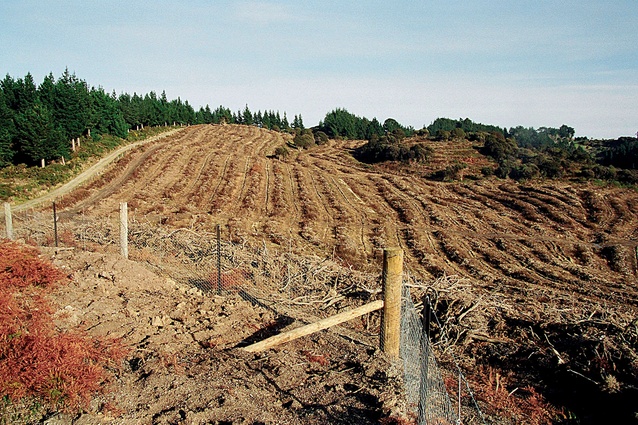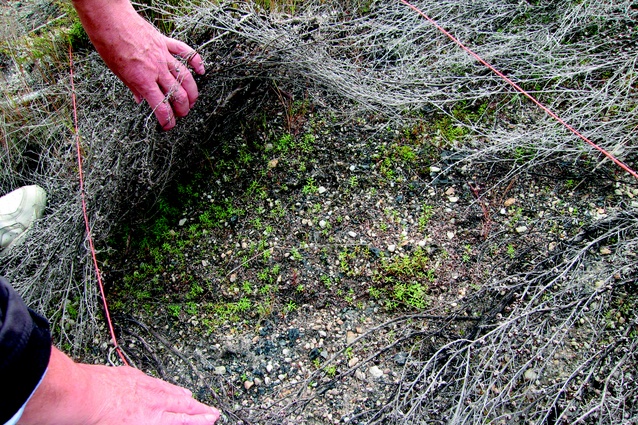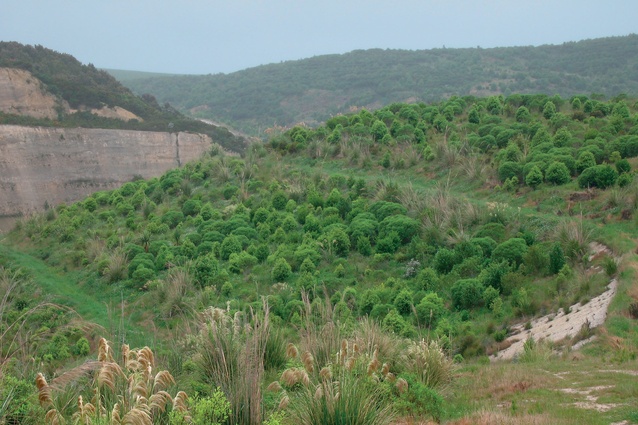Reclaiming Wangaloa
The small south-east Otago township of Kaitangata provides a glimpse of New Zealand history. Settled in the mid 19th century, the town’s economy has centred around a significant coal industry. It has also seen one of New Zealand’s worst mine disasters when, in 1879, 34 miners died in a gas explosion.
Following the closure of the open cast Wangaloa mine, which operated in Kaitangata between 1945 and 1989, Chris Glasson Landscape Architects were tasked with assisting Solid Energy to restore the 75-hectare disturbed site, with the aim of creating a public recreational facility while heralding the site’s industrial history.
Redevelopment of the site began in 2003, with earthworks, planting and fencing spanning a two-year period, and a subsequent seven-year maintenance programme, which commenced in 2005.
As part of the restoration process, public recreational facilities were designed, including mountain biking and walking tracks, an entrance feature, observation points, picnic areas and a climbing wall. Mining relics were retained and incporated into the landscape design. The coal hopper, coal bins, and a digger feature in the landscape - a nod to the site’s history - while the landform features including the 50-metre highwall and lake, which were both created by the old mine pit, now perforate the rugged landscape.
Providing a connection to the historical assocations of the site was a critical part of the restoration process, along with portaying the its robust industrial character. While the incorporation of mining relics allow for this, new objects and spaces feature corten steel and recycled hardwood beams, also reflecting these notions.
Various seating areas were influenced by the former mine operation, which exposed many geological layers in the landscape; these are now reflected in design elements including paving, cladding and isolated features at the entrance, which incorporate white concrete and quartz.
At the outset, the degraded site consisted of eroded waste rock stacks of quartz and coal, and a gorse-infested loessal hillside. The quality of the site was reflected in the four-metre deep crevices on the quartz waste rock stack and the extremely low pH of much of the site, including the lake.
Critical to the success of the restoration process was the long-term geotechnical stability of the waste rock stack. This was achieved by reducing the height and angle of repose, and terracing to reduce surface water erosion. The surface was then top-dressed with lime and a surface layer of organic matter was mixed into the waste rock to improve the substrate for vegetation growth. The lake edge was treated as a riparian margin and planted with appropriate species. On top of the overburden, the inert quartz and coal remains were left in a raw state to reflect the site’s history.
On an adjacent loessal hillside, gorse biomass was retained in situ and root raked into windrows to provide organic matter, wind protection and moisture retention for planted seedlings.
Reestablishing vegetation is a vital component in the physical and functional restoration of degraded mine landscapes. The presence of plants can also control environmental problems generated from the mining process by reducing the interaction of water and oxygen with the underlying substrate.
Regeneration of plant species at mine sites like Wangaloa is often slow, and dominated by weed species. This is due to the main growing medium of crushed rock not having previously supported plant life, which inhibits soil-forming processes. Across the site, substrate pH ranged from extreme to strongly acid, with average values between four and five. The lowest pH values (2.3 – 3.1) were recorded on the coal-rich waste stack. As a result of the corrective measures of organic matter and the subsequent leaf litter from grasses and planted vegetation, the pH became more acceptable at 6.5.
The revegetation process proved to be a challenging one. On the hillsides the loessal soil aided the survival rate, provided gorse regrowth was controlled. The poor performance of planted manuka and kanuka compared to the naturally colonised seedlings suggested genetic background and local acclimatisation, interactive with the substrate composition assisted to determine revegetation patterns. Layering manuka brush and subsequent seed dispersal proved to be much more successful.
Initially, plant survival of propagated stock (300,000 seedlings) was poor on the waste rock stack. However, with increasing vegetative litter and annual doses of fertilizer, plant survival gained momentum. There appeared higher nutritional status in coal-rich waste rock than quartz or silt rock, due to the existence of N,P,C and organic matter.
The success of plants was selective and mainly dependent on the substrate. Kohuhu, lemonwood and broadleaf survived well on the loess material, while on coal-rich waste rock manuka, kohuhu and toetoe prospered. On the quartz substrate koromiko and toetoe were best suited, while the decline of manuka was rapid in the second year. Slow growth of plants was noticeable on the waste rock stack.
To safeguard the future, kamahi, southern rata and totara, all prevalent as the climax forest in the locality, were planted throughout the hillside and kahikatea was retained for the swampy wetland areas.
Management strategies protecting planted stock involved the instalment of a 7km perimeter fence to exclude browsing and grazing animals, as well as using both ground-based and aerial bait operations for further control. An annual maintenance programme of release spraying, scrub cutting, blanking and fertilizing greatly assisted the success of the operation.
The park is now at a stage where the vegetation is self-sustaining; good natural regeneration is now occurring on stable landforms, and birdlife has returned throughout.














